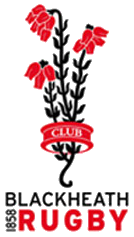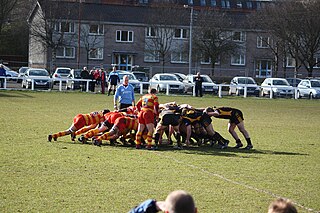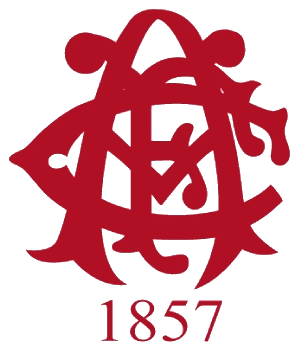
Blackheath Football Club is a rugby union club based in Well Hall, Eltham in south-east London.

West of Scotland Football Club is a rugby union club based in Milngavie, Scotland.

Raeburn Place is the main street of the suburb of Stockbridge, Edinburgh, Scotland, and the name of the playing fields there.

Inverleith is an inner suburb in the north of Edinburgh, Scotland, on the fringes of the central region of the city. Its neighbours include Trinity to the north and the New Town to the south, with Canonmills at the south-east and Stockbridge at the south-west.

The Edinburgh Academical Football Club, also known as Edinburgh Accies, is a rugby union club in Edinburgh, Scotland. The club is currently a member of the Scottish Premiership, the top tier of Scottish club rugby. Its home ground is Raeburn Place, in Stockbridge, Edinburgh. The team is coached by Iain Berthinussen.
New Anniesland is a sports ground in the Anniesland area of Glasgow, Scotland, used for rugby union and cricket. Owned by The Glasgow Academical Club, a sports and social club for alumni of The Glasgow Academy, it is the home ground of Glasgow Academicals RFC and Glasgow Academical Cricket Club.

The Grange Club is a cricket and sports club in the Stockbridge district of Edinburgh, Scotland. The cricket ground, commonly known as The Grange, is the regular home of the Scotland national cricket team, and is situated adjacent to the Edinburgh Academy sports ground, which is in Raeburn Place.
Norman Lang Stevenson was a Scottish all-round amateur sportsman. In international terms his greatest sporting achievement was winning a bronze medal for hockey at the 1908 Summer Olympics as a member of the Scotland hockey team. However it was for cricket that he was best known, as a veteran cricket captain for a leading Scottish cricket club. Between 1902 and 1948 he was Captain of Edinburgh’s Carlton Cricket Club for a total of 29 seasons, retiring at the age of 73. At every stage of his long captaincy there were years when Carlton won over 80% of their matches. He was “one of the great characters of Scottish cricket” according to The Encyclopedia of Scottish Cricket. Carlton members dubbed him the ‘W.G. Grace’ of Scottish cricket in comparison with England’s famously long playing cricketer. Stevenson also wrote a substantial book about the Scottish cricket of his era which has remained in use as a reference book into the 21st century.
Leith Rugby, formerly known as Leith Academicals or Leith Accies, is a rugby union club in Leith, Edinburgh, Scotland.

Rugby union in Scotland in its modern form has existed since the mid-19th century. As with the history of rugby union itself however, it emerged from older traditional forms of football which preceded the codification of the sport. In the same manner as rugby union in England, rugby union in Scotland would grow at a significant rate to the point where Scotland played England in the first ever rugby union international in 1871, a match which was won by the Scottish team.
Henry James Stevenson was a Scotland international rugby union player. He played at Full back. He also played first-class cricket.
Heriot's Cricket Club is a cricket club based in Edinburgh, Scotland.

The rugby union match played between Scotland and England on 27 March 1871 was the world's first international rugby match. The match was played at Raeburn Place, Edinburgh in front of 4,000 spectators. Scotland won the match, scoring two tries and a goal to England's single try.
Merchistonian Football Club is a rugby football team based in Edinburgh, Scotland. It was for former pupils of Merchiston Castle School.

John Shaw Thomson was a rugby union international who represented Scotland in the first international rugby match in 1871.

William Forsyth was a rugby union international who represented Scotland in the first international rugby match in 1871.
William Lovat Fraser was a Scottish sportsman who played cricket and rugby union at an international level, representing Scotland in cricket and touring Argentina with the 1910 Combined British rugby union side, an early incarnation of the British and Irish Lions.
Glasgow District is a Scottish amateur rugby union team which plays in the amateur Scottish Inter-District Championship. The side evolved into the professional provincial side Glasgow Warriors when the Scottish Rugby Union embraced professionalism. However the amateur district is still used for the representation of amateur players in the Inter-District Championship; and this amateur championship guides the selection of Scotland Club XV international players.
The Inverleith Sports Ground is a rugby union stadium in Inverleith, Edinburgh, Scotland which is the home ground of amateur club Stewart's Melville RFC and was the home ground of the Scotland national rugby union team between 1899 and 1925.










